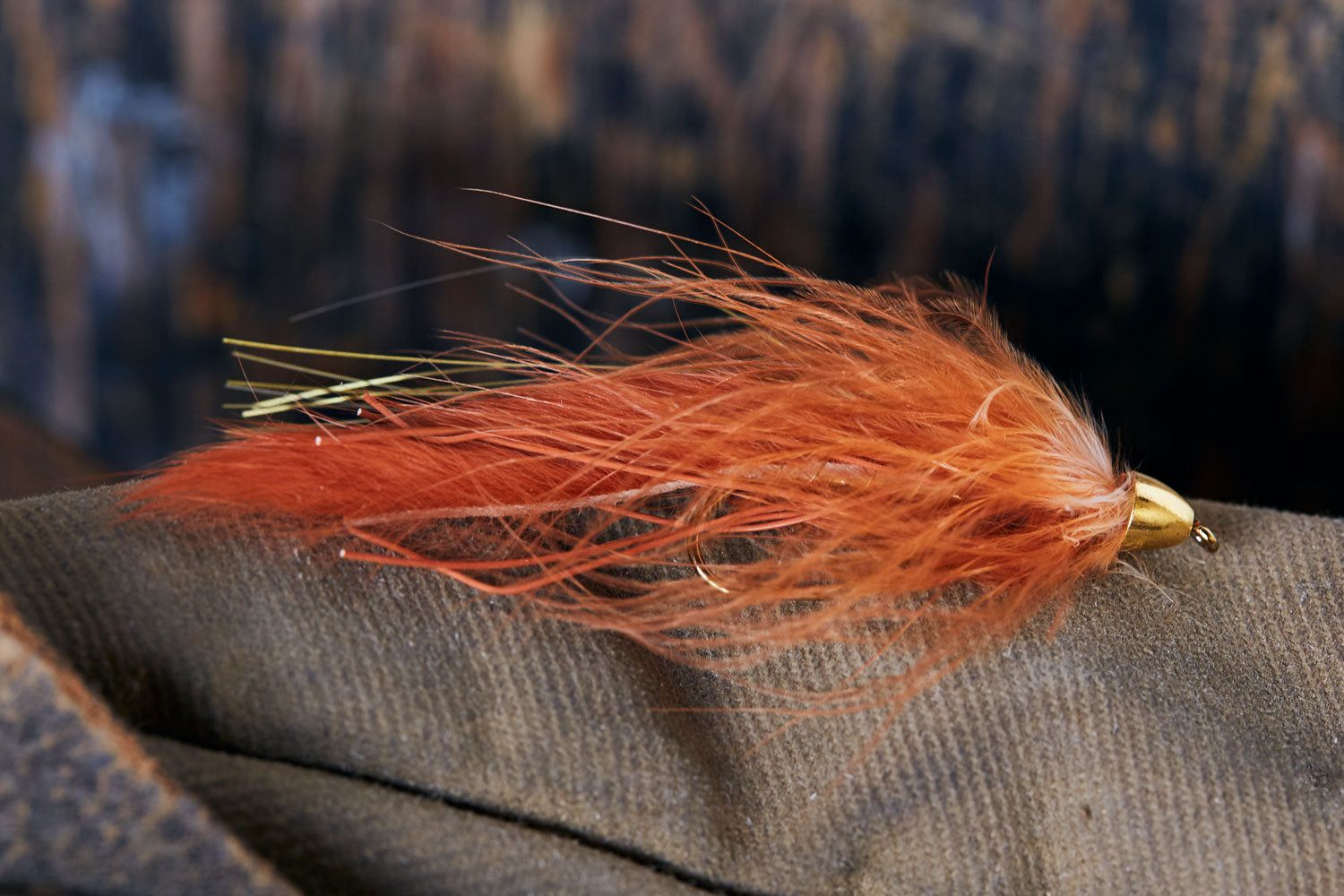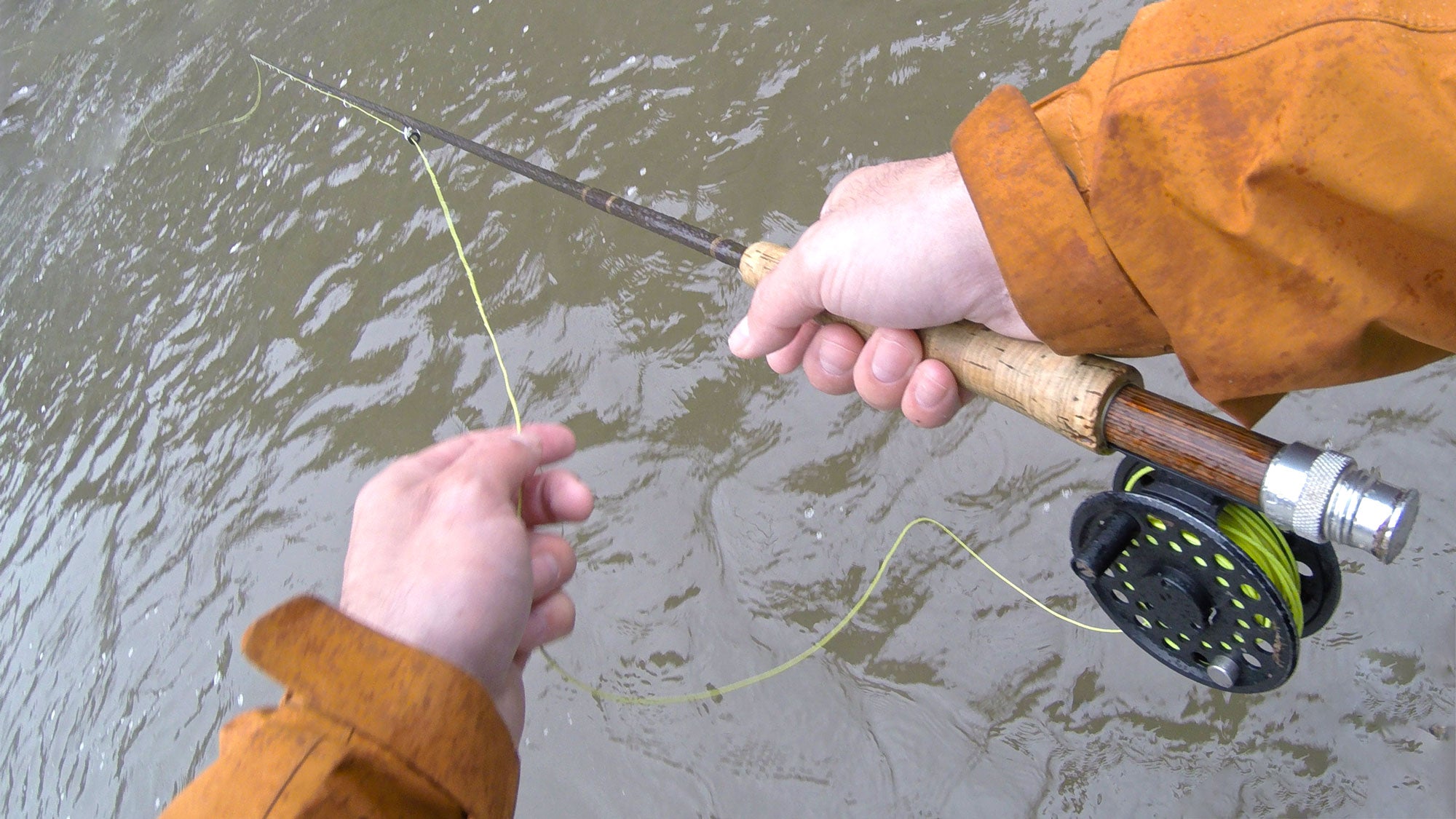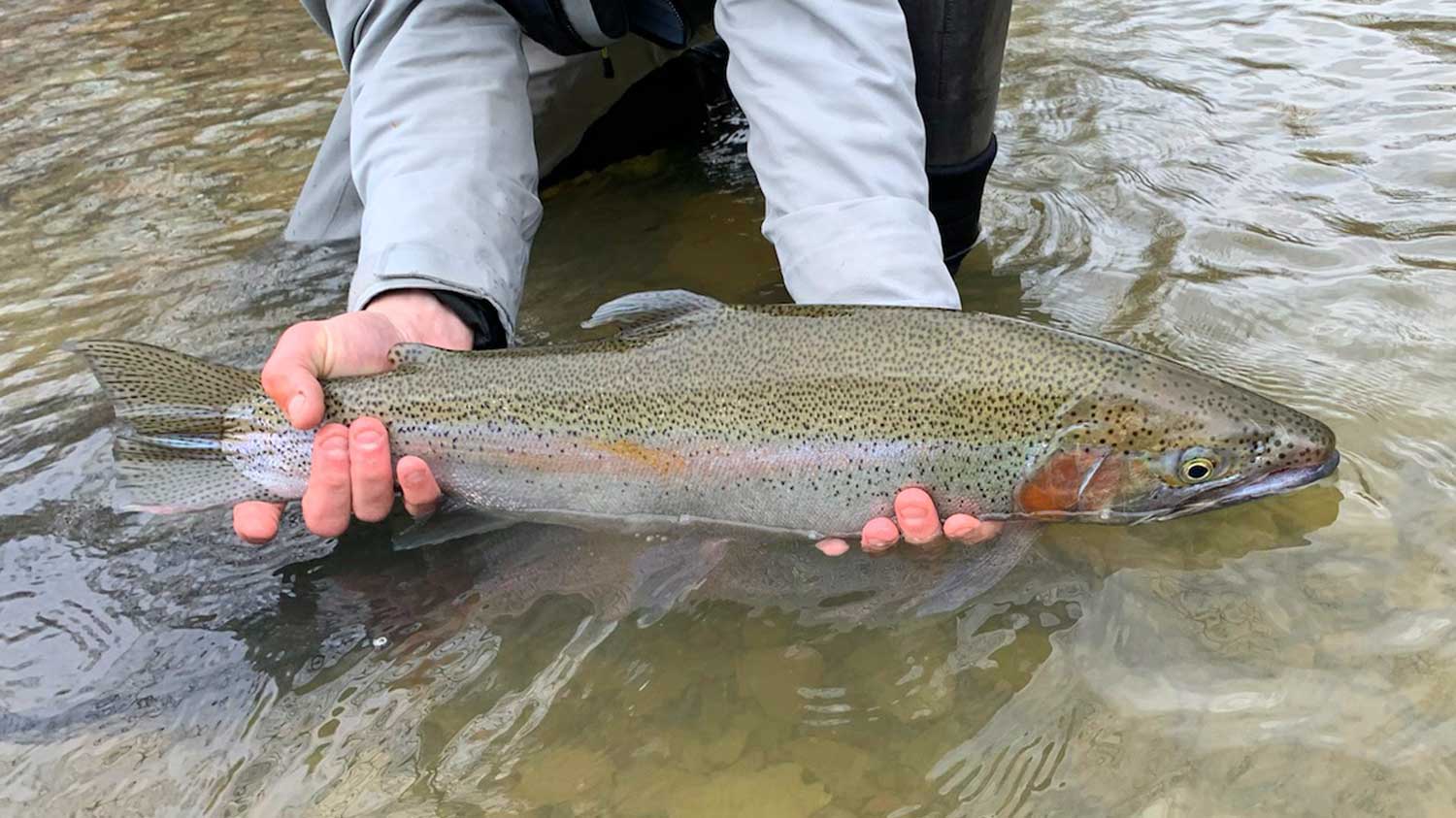
If you’ve read about fly fishing streamers but aren’t entirely what they are or how to use them, then you’ve come to the right place. In this article, we answer all your streamer-related questions and provide some unexpected insights to boot.
What Are Fly Fishing Streamers?
Streamers are a type of fly fishing pattern that you use while fly fishing to catch fish. Typically, they are bigger than traditional baits and closely resemble aquatic prey such as leeches, large aquatic insects, and small fish.
Of course, that’s not all that there is to say on the subject of fly fishing streamers. But don’t worry, it is easy to pick up. And once you get the gist of it, you’ll have more fun in the water than ever before.
Streamers are popular among fly fishers keen on catching larger fish, like freshwater trout. Bigger fish will often ignore small baits. But they will respond more readily if they see what looks like a giant, tasty morsel floating in the water.
Big flies mean big prey. Leeches, crawfish, and baitfish represent a significant source of calories. Those who use fly fishing streamers, therefore, need to prepare themselves for hard bites. Controlling fish during the catch is physically demanding.

When it comes to angling, there are few more exciting moments than catching a massive, 20-pound fish on the end of a streamer. That’s one of the reasons why they’re not so popular. People have a desire to get back to basics, but they also want rewards. And that’s precisely what streamers offer.
Streamers are also popular because they are one of the most versatile flies. You can use them in practically any setting, including choppy and murky water. Their sizable physical presence means that fish find it easier to detect them, making bites more likely.
Types Of Streamers
Streamers come in many different varieties, depending on your needs.
- Feathered Streamers. Feathered streamers were among the first to hit the market and remain popular to this day. Bucktails are also common in most fly fishing sets. These can represent anything from baitfish to leaches
- Wooly Buggers. Wooly buggers are a type of artificial insect, designed to mimic the appearance of a fly while submerged underwater. Sometimes called a wet streamer, fly fishers use these streamers in both fresh and saltwater locations.
- Sculpins. Sculpin streamers mimic the appearance of sculpins: small fish that make their homes in shallow water, ripples and pools. They are a favorite food of trout and other large freshwater fish and, so, are one of the most prevalent baitfish in the fly box, usable in practically every setting. Just like wooly buggers, sculpins come in a vast array of variations you can deploy selectively to maximize your chance of a catch.

Other fly fish streamer variations include leeches and crawfish, but you don’t have to match natural food sources exactly. Most large freshwater fish will bite whatever streamer you throw at them if they’re hungry. Matching the streamer to the season and the species can help too, but the majority of fish you want to catch aren’t fussy. If they’re on the prowl for a meal, they’ll bite.
Streamers also come in a wide array of different colors. Whether the color is important, however, remains debatable. While some fish will react to changes in color, many do not. Most lack the sophisticated eye receptors that they need to tell the difference between one tone and another.

Colors could still make a difference to your chances of success, depending on how it interacts with natural light. If you’re traveling to a new location, consult local fishing guides to see which colors local anglers recommend. Sometimes you’ll find specific communities of fish displaying a preference to one color over another, either because it makes the lure look like their prey, or because it is more visible.
Some locals may promote specific streamer patterns and colors as the most productive, but don’t be afraid to experiment. There’s no definitive science of which is the most effective. If in doubt, stick with the mantra, “bright skies, bright fly; dark skies, dark fly.” If it is a bright, sunny day, choose a colorful fly. If it is a dark, dull, drizzly day, select a black streamer.
Some streamers don’t resemble any form of prey, and, interestingly, this doesn't seem to matter. Freshwater fish instinctively home in on anything that looks remotely like an insect or vertebrate. Artificial streamers seem to emphasize the characteristics that fish look for when hunting for food, making them easier to detect than natural prey.

When To Use Fly Fishing Streamers
There’s nothing quite like the thrill of fly fishing using streamers, but their usefulness goes way beyond catching just large fish. They’re also helpful in conditions where you can’t catch fish using any other kind of fly.
When you approach a body of water, it can be challenging to choose the right bait. The choice often comes down to your judgment of the conditions. Typically, streamers allow you to catch fish in high and dirty water because of their size and how they move in the water. Fish detect the telltale signature of what they believe is prey and move in to feed. Thus, they can help you out enormously when there is dirt or sediment in the water.
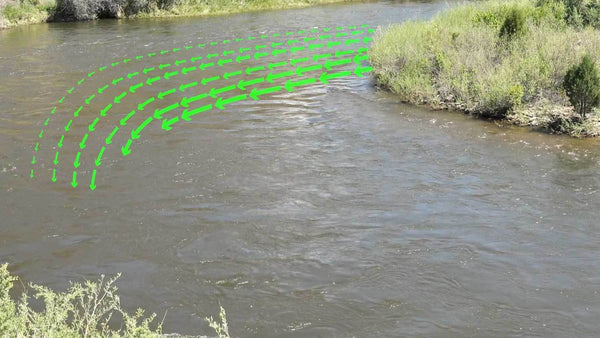
Fly fishing streamers are also beneficial for when you don’t know the type of fish in the water or what they’re eating. Usually, you have to tailor your lure to the species that you want to catch. But if you’re going in blind, that’s not always possible. Thus, streamers give you a “catch-all” method you can use to pick up any large fish that might be in the water, even if conditions are poor.
Streamers also allow you to cover a lot of water. Their large size means that fish can see them from further away, making them an effective lure even when stocks are sparse. It also means that you don’t have to change location so often if you don’t want to. They let you spend more time fishing and less time scouting for new patches of water to explore.

In many ways, streamers are ideal for choppy conditions. The combination of reels and heavy streamers means that you can toss them practically anywhere that looks promising and get a result. They are perfect for people just starting on their angling journey who don't feel comfortable evaluating water conditions. All you need to do is attach the streamer to your line and cast it into the water. That's it.
Streamers are a great choice if you want to fish in rising water levels after a rainstorm. As the water swells, baitfish and other creatures begin to move out of their riverbed habitats and into the main body of water. This process then attracts the large predator fish that you want to catch.

As fish like trout descend on the baitfish, it provides fly fishers with an opportunity to take advantage of the chaos and get a bite. Look for the telltale signs of predation: a sudden eruption out of the predator fish out of the water. That’s your cue to cast your line and dunk your streamer into the fray. Cast your line into the melee and then wait for the inevitable tug.
On some clear summer afternoons, you may find that they don’t work at all. If you decide to use a streamer on a sunny day, choose a small one and fish it slowly and carefully. Fish can be afraid to bite in bright weather, but sometimes all it takes is the sun to go behind a cloud, and for them to change their minds.
Streamers give you an active form of fishing and are the closest you can get to conventional types of tackle. Given how flexible they are, you can use them for fishing in pretty much whatever the conditions you like. This freedom is part and parcel of why they are so popular.

Why Are Streamers So Effective For Finding Trout?
Experienced anglers know that streamers are highly effective for catching trout. But the question remains: why?
The obvious answer is that streamers mimic the appearance of the food that trout would typically eat, such as crawfish or baitfish. But some designs are effective at catching fish that don’t resemble typical food sources. These include leeches, hellgrammites, and stoneflies.
One theory is that the fish are acting on reflex. They see the bait wiggling in the water, and they can't help but come up for a bite. Another idea is that these larger insects look very similar to the trout's preferred prey. The fish can't tell the difference, so come up for a bite anyway.
Finally, there’s the idea that fish can’t afford to pass up such a calorie-rich meal, no matter what it might be. They never know when their next meal might arrive.

What Type Of Rod Should You Choose For Fly Fishing Streamers?
If you’re using streamers, then going big with your catches is high up your list of priorities. For that reason, you need to choose a reinforced rod - something that can cope with the pulling and tugging of the kinds of species that you’re likely to attract. People have caught trout weighing over fifty pounds in places like Great Bear Lake, with some catches 65 pounds and above. Ordinary rods can't deal with that kind of punishment.
If you fish streamers a lot, then you’ll probably want to invest in a six or seven weight rod. These tend to be better at throwing larger flies than their four or five weight cousins.

For those who like to fish in shallower water, a floating line usually works okay. If, however, you want to get serious about streamer fishing, then a sinking dip line is the better choice. It is more stable in fast,-flowing deep water due to its heavier weight. And it allows you to attract big fish that might live further down towards the bed - increasing your chance of a satisfying catch on open water.
Just remember not to go too light on your tippet if you’re using large streamers. Sometimes fish will grab onto the line and violently tug. You need something that can withstand the force and keep your streamer attached to the line. Heavy-duty tippets are discreet and don’t significantly alter the appearance of the lure. Typically, your tippet should be 3X, but if you’re using huge flies, you might want to choose 2X or more.
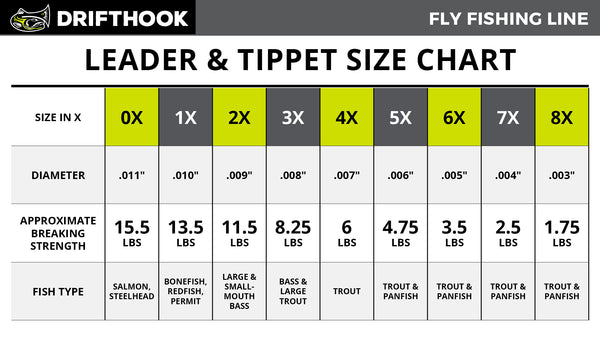
What Other Equipment Do You Need For Streamers?
Once you’ve got your rod sorted, you need to consider the rest of the equipment that you’ll include in your arsenal.
- Traditionally, fly fishing was a minimalist sport that attempted to get back to basics. But as it has become more popular, people are making additions to the kit. Here's where indicators come in. These are small pieces of cork or plastic that float on the surface of the water, telling you if you’ve had a bite. Typically, they work best with smaller flies, but not necessarily. They allow you to slacken off on the line from time to time so that you can mimic an injured prey item.
- Reels. Fly fishing rods come with substantial reels, giving you the extra heft you need to wrestle the larger fish. Typically, fly fishers choose a large arbor - great for when you’re down to your backing.
- Leaders. A leader is a bait element that people typically use for trout or other large fish. It encourages your line to sink, making it more visible and attractive to fish further down in the water. Leader sizes usually range six to nine feet and use 3 to 4X. Those looking to catch the biggest fish will often use even larger lines, all the way down to 1X in some situations.
How To Cast Your Streamer
It can take a lifetime for anglers to perfect their casting techniques with the precision characteristic of professionals. They make it look so elegant - and easy!
If you’re new to the sport emulating the people you see in the magazines and on YouTube can be a challenge. Streamers tend to be much more substantial than regular flies, meaning that the traditional overhead, double haul casting method doesn’t always work!
So what’s the solution?
- Stand upstream of the patch of water that you’re looking to fish. Doing this prevents the line from coming back towards you and maintains tension so that you can feel a bit.
- Pick the spot where you’d like your streamer to land. Look for a bank, hole, or current that is likely to harbor fish.
- Load up the tension on the fly. You don’t necessarily need to perform a back cast. As long as there is tension on the fly, you should be able to cast it.
- Swing it once or twice. The weight of the streamer means that you only have to apply a small amount of force to put it in motion.
- Finish the movement with the tip of your rod in the air, at around 120 degrees, or 30 degrees relative to the water. Leaving the rod in this position will allow the fly to travel further.
This video from Lost Angler shows the process of casting heavy flies in more detail:
Importantly, always make sure that you cast within a few feet of the opposing bank (where one is available) if you’re fishing in choppy waters. Most fish will congregate here, and so will their prey.
Also, try where possible to “fish the seam.” The seam is a patch of water where currents of two different speeds meet. Fish will often congregate here to conserve their energy. It’s a kind of underwater pitstop where they wait patiently for any food that might be passing by.
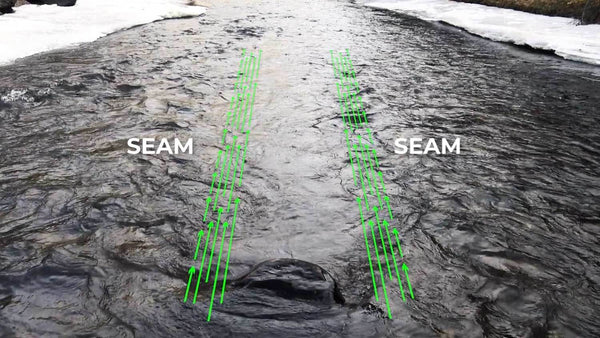
Finally, don’t be afraid to fish deep with streamers. If the water is dirty, fish deeper down won’t be able to see bait at the surface.
How To Streamer Retrieve
Once you're set up with the gear, you need for fly fishing, and the next step is to perfect your streamer technique. Many people stand perpendicular to the bank of the river or lake and reel in with six-inch strips, mimicking prey trying to escape. Interestingly, though, that isn't the only way to fish with streamers.
If you find that the fish aren’t biting for the six-inch strip method, try to switch up your retrieve.
Another form of retrieve is the jerk strip. The jerk strip is a very successful technique for large sculpin patterns and baitfish patterns.
When performing your retrieve try these techniques to boost up your catch rate
- Swing it like a steelhead fly. Another common technique is to simply swing the line as you might a steel-head fly. Here you cast your line upstream and then let it tighten with the natural movement of the current.
- Dead drift. Haul in the line in six-inch strips with a pause after every second strip. This pause-retrieve-pause method tends to be highly effective in water temperatures below 50 F (9 C). It seems to mimic how prey move when they get cold.
- Quartering downstream. The purpose of this technique is to hide the line as best as possible from easily-spooked species of fish. Cast downstream at an angle and then wait for the current to move the line. Fish will often follow it as it moves across the river before they bite, so it is worth leaving the streamer in the water for some time before recasting. When you do cast the line again, make sure that it lands several feet from the previous position to avoid sending the fish into a panic.
- Cast upstream. When you cast the streamer upstream, it tends to bob about in the water, fluttering and pausing. This technique, therefore, mimics the behavior of certain prey items when they get scared or believe that there is a predator nearby. Casting upstream can help to attract types of fish that bite when they detect telltale prey movements. You can enhance this action as you strip.

Streamer Techniques For When Fish Won’t Connect
Freshwater fish will often boil around a streamer but be unwilling to connect. If that happens, you may need to adjust your technique. If you notice that fish don’t want to bite, try going back to the same spot of water using a different type of retrieve. Sometimes, a SLOWER retrieve can incentivize the fish to connect. At other times, being more erratic can help. Fundamentally, you want to convince the fish that you’re genuine prey and that it is worthwhile going in for the bite.

When fish persistently refuse to take the bait, some fly fishers try using a different streamer. Experienced anglers, however, know that this approach rarely works. If a trout doesn’t want to take the lure right now, it probably won’t if you switch it out for a new one.
Sometimes fish are unwilling to move toward a streamer because of the current conditions in the water. If the temperature is cold or it is full of sediment, it doesn’t pay to continually cast the line to the same spot, over and over again. A much better approach is to move to a new area to see if you have more luck there.

If it is a cold, slow day, try to cover as much water as you can. Your goal should be to lure the hungriest fish out of their hiding places. Cast the streamer into spots that you think likely harbor fish, wait for a few minutes and then move on if there is no bite. Remember, fish will rarely change their mind if you repeatedly cast the line. Moreover, it could put them off taking the bait altogether.
Streamers are among the biggest flies. Any fish in the water is likely to see them on your first cast. If they get the impulse to move, then they will. If they’re too cold or fearful, they won’t. Sometimes you just have to accept their mood on the day.
Streamer Technique In Choppy Waters
Typically, people use streamer retrieves in choppy, dirty waters where visibility is low. In these conditions, it doesn’t make a lot of sense to fish out in open water. Even with a sizable lure, fish will struggle to see it.
In choppy, silt-laden waters, fish will usually retreat to the banks and areas of cover. For this reason, experienced anglers cast and retrieve closer to the banks, rocks, and the seam in the bend of the river, increasing the likelihood of making a catch.

If the water is particularly choppy or dirty, adjust your streamer technique to add some motion to the lure. Fish won't always be able to detect the bait if it is fixed in one position. Either use the techniques described above or gently tug on the line now and then to encourage fish to strikeout.
Remember, if there's a lot of debris in the water, like twigs and leaves, the streamer may blend in. Adding motion tells fish that it is alive and something tasty to eat. Be careful to retrieve slowly. Going too fast could make it difficult for larger fish to bite.
Fish detect prey using the lateral sensing array that picks up vibrations in the water. When conditions are choppy, it becomes harder for fish to distinguish these vibrations from the general noise in the environment, making them less likely to bite.
Choosing a bunny leach or another fuzzy streamer might be the best option here. These flies emit telltale vibration patterns that overcome ambient noise, making it easier for fish to detect them.

How To Dead-Drift Streamers
Dead-drifting is fast becoming one of the most popular fly fishing techniques, thanks to its almost unparalleled ability to get results. Fish perceive the bait as a tasty morsel, floating down the river with the current. To dead drift a streamer, cast it slightly upstream and then gently strip it back, maintaining tension on the line by reeling it in slowly.
If you find that you’re still not having any luck, you can try attaching both a dropper nymph and a strike indicator to your line. The nymph attaches to the end of the fly streamer and helps to tug it under the water to a level at which fish are more likely to bite. And the strike indicator bobs to the surface, letting you know whether you’ve had a bite, without the need to maintain constant tension on the line.
For many fish, the combination of the streamer and the nymph is deadly. They can bite either lure, thereby activating the strike indicator, telling you that it is time to reel in the line. This technique is excellent for days when the fish don’t seem to want to venture out of their hiding places.
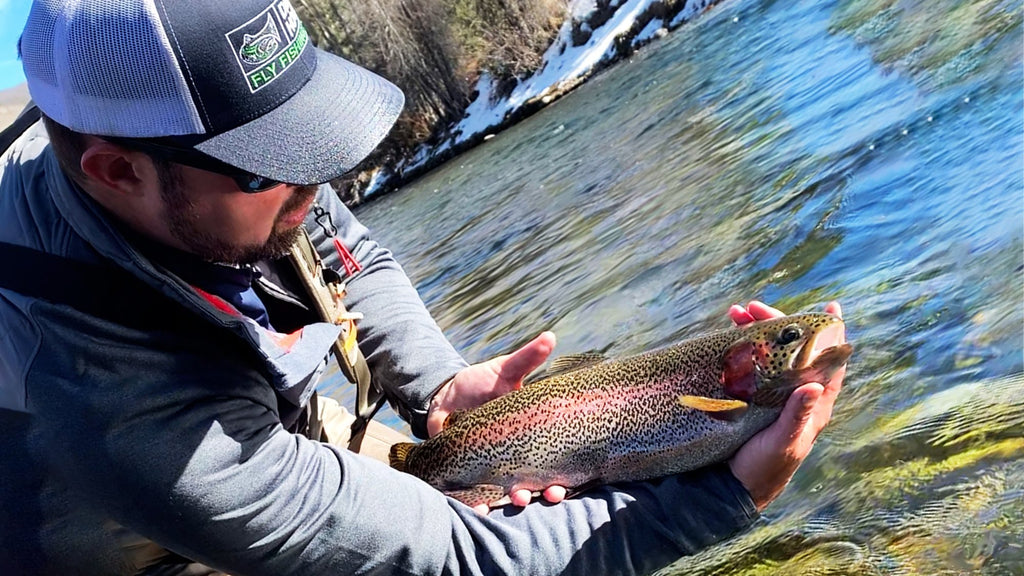
About the Author
Matthew Bernhardt, a third-generation Coloradan, grew up at the forefront of the state’s fly-fishing revolution, enjoying time on the water side by side with experienced guides and lifelong anglers.
By combining his passion for fly-fishing with input from other experienced fly-fishers and guides and his fine arts degree from Colorado State University, Matthew spent five years carefully developing the Drifthook Fly Fishing System, built to help every angler catch more trout.
When he’s not spending time with his wonderful family, you’ll find him out on the water catching MONSTER trout, and he anxiously looks forward to the day when his kids are old enough to join him there.

